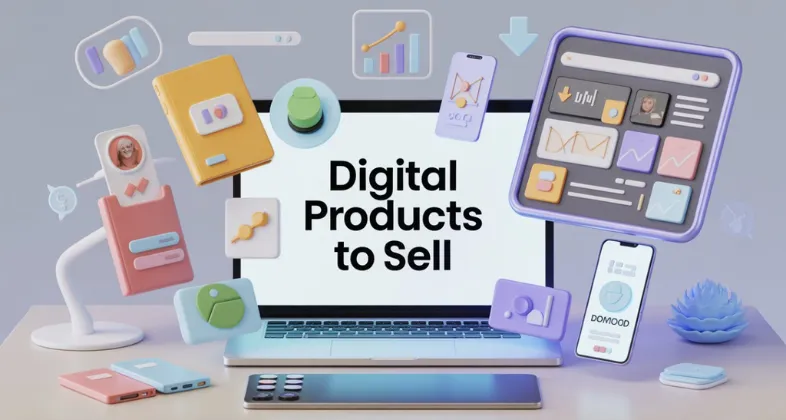Vimeo OTT has been a popular choice for hosting and monetizing video content, but it is not the only option available. Many creators and businesses now seek platforms with more competitive pricing, more flexible monetization options, or stronger e-commerce tools. These alternatives range from all-in-one streaming solutions with branded apps to creator-focused tools that combine video hosting with merchandise and memberships. Some excel at live streaming, while others focus on complete platform ownership or global reach. By understanding the strengths of each, it becomes easier to match a platform to specific goals.
The following sections will examine what Vimeo OTT offers, its shortcomings, and how each of the alternatives to Vimeo OTT compares to it. From enterprise-level solutions to free, high-reach platforms, the options cover a wide range of needs for scaling video content and building a sustainable audience.
Overview of Vimeo OTT and Its Limitations
Vimeo OTT is a subscription-based video streaming platform designed for creators, media companies, and content owners who want to launch branded streaming services without building infrastructure from scratch. It offers tools for hosting, delivering, and monetizing video content through multiple revenue models. However, its pricing, scalability, and feature set may not fit every business model.
Key Features of Vimeo OTT
- Vimeo OTT offers high-quality video playback, supporting resolutions up to 4K and adaptive bitrate streaming to accommodate viewers’ varying internet speeds.
- Its video CMS allows users to upload, organize, and manage large video libraries. Playlists, categories, and collections help create a structured on-demand catalog.
- The platform supports multiple monetization options, including subscription video on demand (SVOD), transactional video on demand (TVOD), and pay-per-view events. Users can combine these models to diversify revenue.
- Another important feature is live streaming, which is built-in, allowing creators to broadcast events in real-time and later store them as on-demand content.
- Branding options include a customizable video player, white-label web interfaces, and branded TV apps for platforms like Roku, Fire TV, iOS, and Android.
- Additional tools include video analytics for audience insights, marketing features like promo codes and email campaigns, and integrations with payment processors and marketing platforms.
Common Challenges and Drawbacks
- While Vimeo OTT offers a polished interface and reliable content hosting via global CDNs, its pricing model can be costly for smaller creators. Fees often include per-subscriber charges plus transaction costs, which may limit profitability.
- Advanced features such as DRM protection, custom OTT apps, or deep API integrations may require enterprise-level plans, raising costs further.
- Its eCommerce capabilities are limited compared to platforms that combine video monetization with merchandise or digital product sales.
- Some users report restrictions on video embedding outside the platform, which may hinder multi-channel distribution.
- The platform’s marketing tools are functional but less robust than dedicated marketing software, making audience growth more challenging without external integrations.
When to Consider an Alternative
- Creators may seek an alternative if they need lower-cost hosting with flexible monetization, such as ad-supported (AVOD) models, which Vimeo OTT does not emphasize.
- Businesses that require full platform ownership or one-time licensing, rather than recurring fees, may prefer a self-hosted OTT solution.
- Those seeking deeper eCommerce integration, advanced community features, or greater control over video delivery networks may find Vimeo OTT limiting.
- Organizations with strict DRM requirements, niche app support, or large-scale live streaming events may also benefit from platforms with specialized capabilities.
- More competitive options can offer similar video streaming platform benefits while adding features like hybrid monetization, faster deployment, or greater customization.
List of Top 8 Alternatives to Vimeo OTT
Several video streaming platforms offer tools for hosting, monetizing, and customizing content that meet different business and creator needs. Some focus on live streaming and pay-per-view, while others emphasize branded apps, enterprise-grade features, or flexible monetization models.
1. Dacast
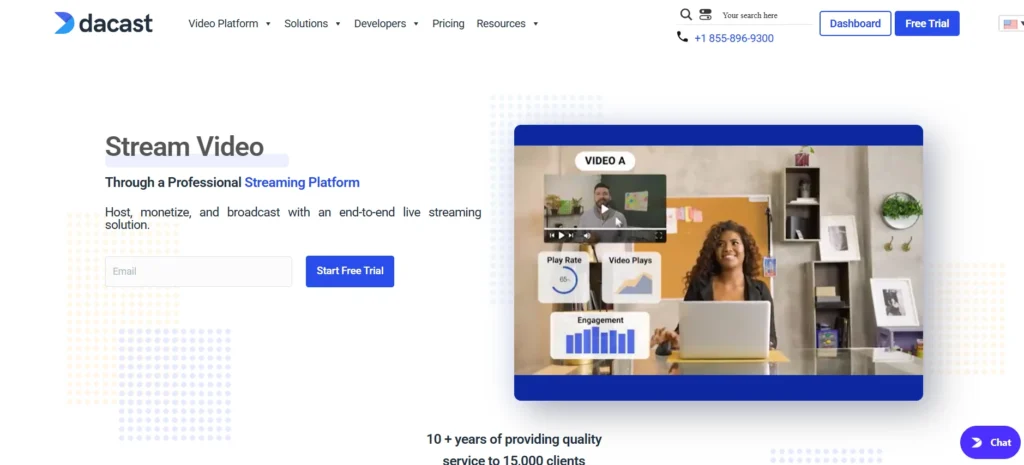
Dacast is a professional-grade video hosting platform known for its strong live streaming capabilities. It supports pay-per-view (PPV), subscription video on demand (SVOD), and ad-supported video on demand (AVOD) models through a built-in paywall.
Its global content delivery network (CDN) ensures reliable playback with minimal buffering. The platform also offers white-label players, giving full branding control.
Dacast integrates with tools like Zoom for hybrid events and provides real-time analytics. While it has a steeper learning curve than some creator-focused services, it suits organizations that prioritize event streaming, webinars, and corporate broadcasts.
Plans start at $39/month when billed annually, with higher tiers for larger bandwidth and storage needs.
2. inoRain
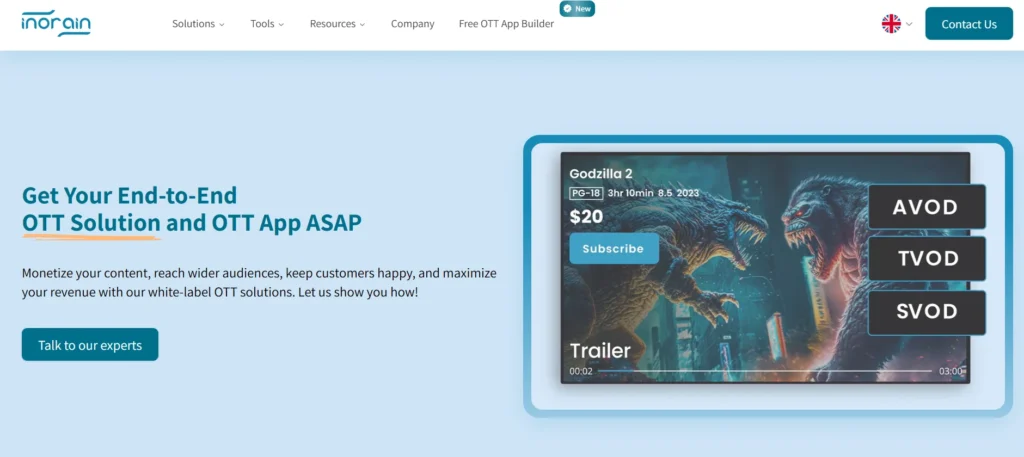
inoRain is a lesser-known but growing Vimeo OTT competitor that focuses on flexible OTT deployment. It offers cloud-based infrastructure for video hosting, live streaming, and on-demand content.
The platform supports multiple monetization methods, including SVOD, TVOD, and ad-based revenue. Its API-driven design allows for custom integrations with existing websites or apps.
inoRain provides adaptive bitrate streaming for smooth playback across devices. It also includes basic analytics to track viewer engagement and retention.
While it may not have the brand recognition of larger platforms, inoRain appeals to businesses seeking a customizable, cost-effective streaming solution that requires minimal upfront investment.
3. JW Player
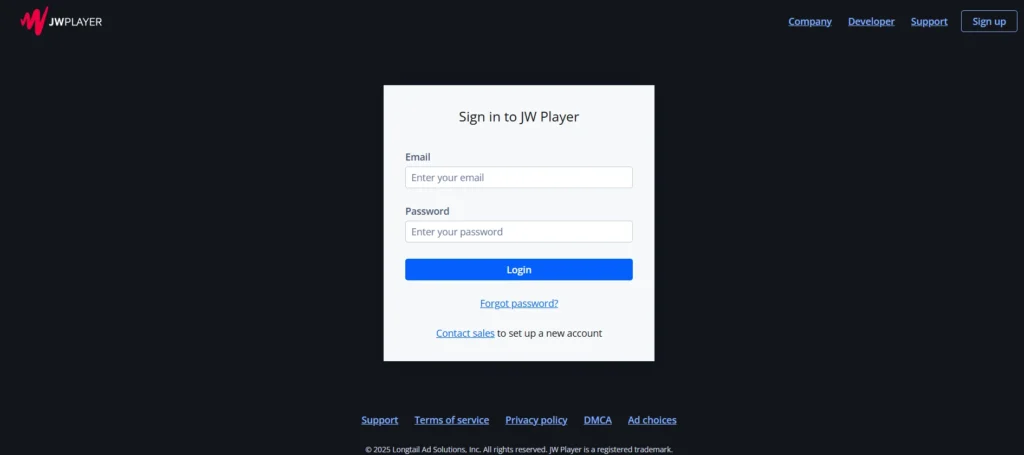
JW Player is widely used for its fast-loading, responsive HTML5 video player. It offers both video hosting and live streaming, making it a versatile choice for publishers and media companies.
Its monetization options include advertising integrations with major ad networks, making it ideal for AVOD strategies. JW Player also supports DRM for secure content delivery.
The platform’s analytics suite tracks viewer behavior in detail, helping optimize content performance. It provides APIs for custom workflows and integration with CMS platforms.
JW Player is often chosen for its player performance and scalability, though its advanced features are geared toward teams with some technical expertise.
4. Kaltura
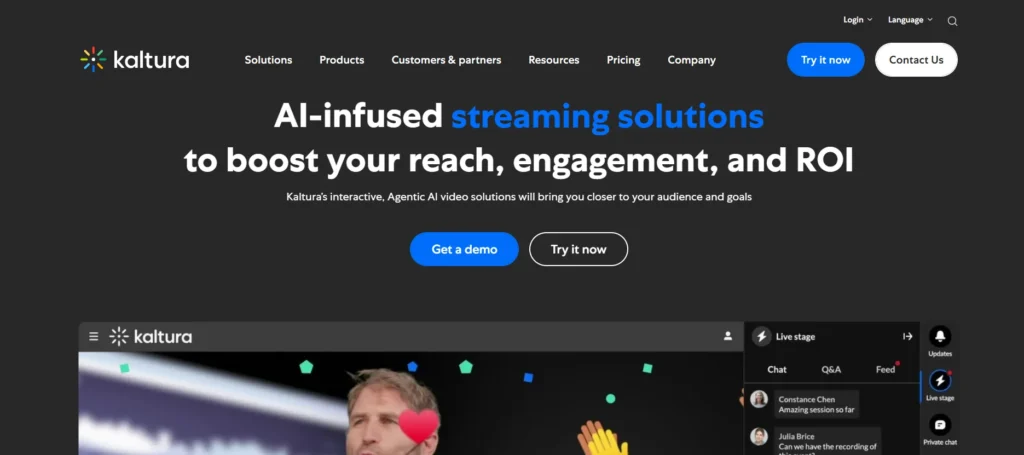
Kaltura is an open-source, enterprise-focused video platform used by corporations, universities, and large organizations. It supports live streaming, on-demand libraries, and virtual events at scale.
Its modular architecture allows businesses to deploy only the features they need, from lecture capture to OTT apps. Kaltura offers strong API support for custom integrations.
The platform includes robust security, including DRM, encryption, and access controls. It also features advanced analytics for tracking engagement and compliance.
While Kaltura requires more setup than plug-and-play services, its flexibility and scalability make it a strong choice for complex video strategies.
5. Brightcove
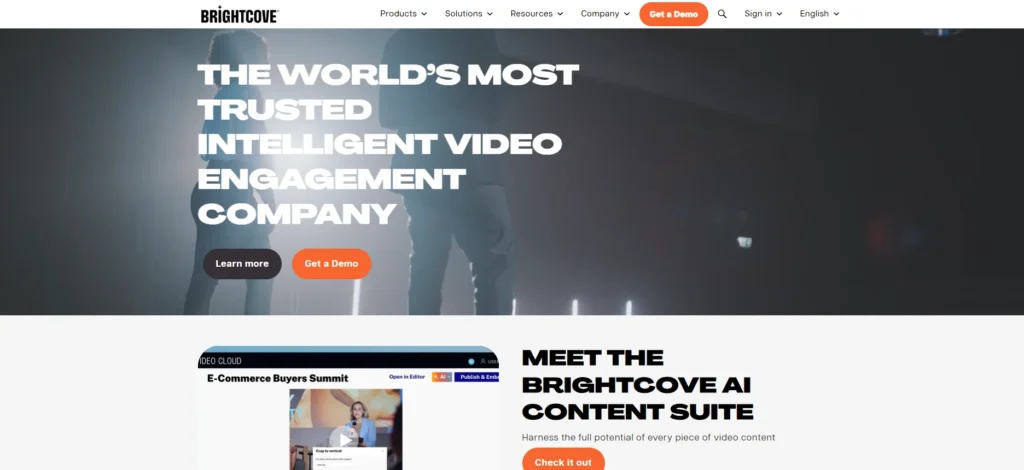
Brightcove is a long-standing leader in online video streaming for enterprises and media companies. It offers cloud-based hosting, live streaming, and OTT app deployment.
Its Video Cloud service supports multiple monetization models, including ad-based and subscription. Brightcove’s analytics provide deep insights into viewer behavior and campaign performance.
The platform integrates with marketing automation tools, making it popular for businesses that tie video directly to lead generation and sales. It also offers strong security, including DRM and geo-restrictions.
Brightcove is best suited for organizations that need enterprise-grade reliability and global delivery.
6. Muvi
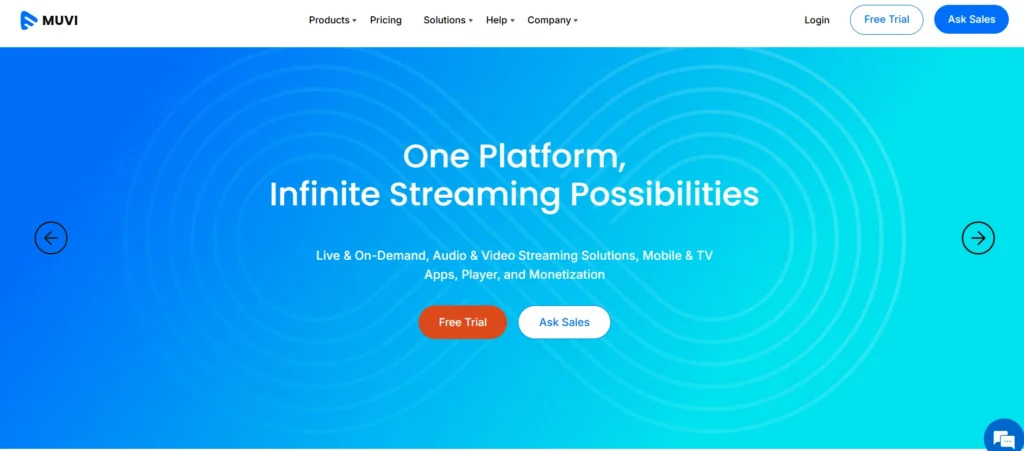
Muvi is an all-in-one OTT platform that enables users to launch branded streaming services without coding. It supports web, mobile, and smart TV apps.
Muvi’s monetization flexibility includes SVOD, TVOD, AVOD, and hybrid models. It offers a built-in CMS for managing large video libraries and supports live streaming.
The platform includes marketing tools, analytics, and integrations with payment gateways. It also provides white-label branding for complete design control.
Muvi is a strong option for businesses that want to quickly deploy a professional streaming service with minimal technical setup.
7. Vodlix
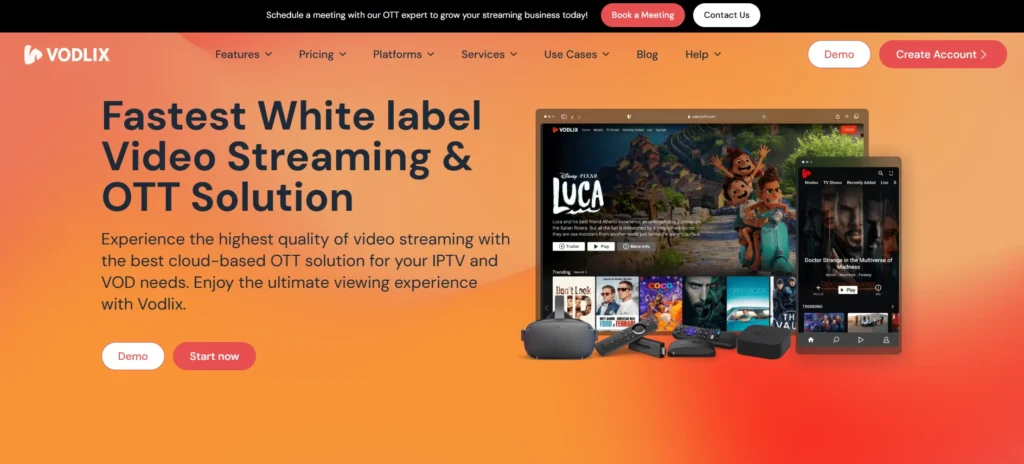
Vodlix is a white-label OTT platform that supports both live and on-demand streaming. It offers customizable web and app interfaces to match brand identity.
Its monetization options include subscriptions, rentals, and ad-based revenue. Vodlix supports multi-DRM protection for secure content delivery.
The platform includes analytics, user management, and CDN integration for global reach. It also offers multi-language support, making it suitable for international audiences.
Vodlix caters to media companies, content owners, and educational institutions looking for a scalable and secure streaming solution.
8. Livebox
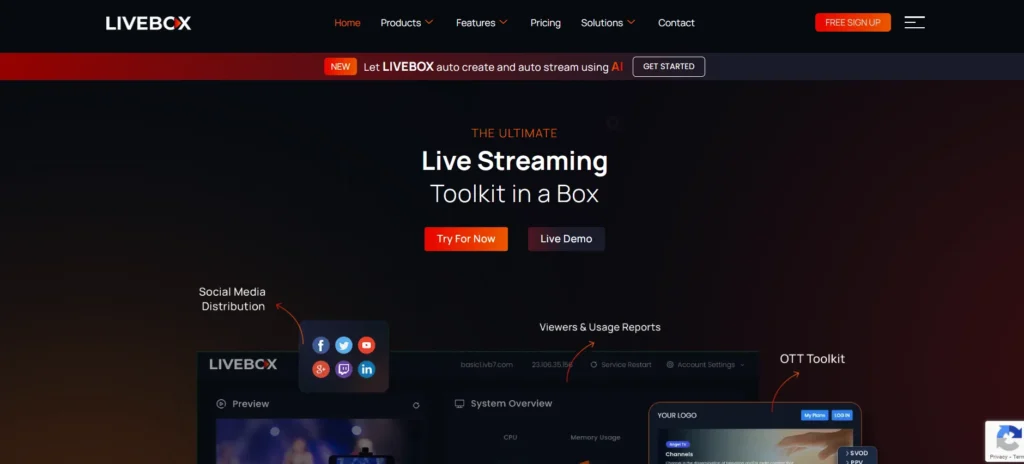
Livebox is a live streaming server platform designed for high-volume broadcasting. It offers unlimited channels, making it suitable for media networks and event organizers.
The platform supports adaptive bitrate streaming, ensuring smooth playback on various devices and connection speeds. It also includes built-in tools for video conferencing and webinars.
Livebox provides options for pay-per-view monetization and integrates with social media for multi-platform broadcasting. Its dashboard offers real-time analytics for monitoring stream performance.
While Livebox is more technical to operate than some SaaS-based platforms, it is valued for its scalability and control over streaming infrastructure.
How to Choose the Right Vimeo OTT Alternative
Selecting a platform for hosting and monetizing video content depends on matching its capabilities to the creator’s goals, audience needs, and budget. The right choice balances technical performance, monetization flexibility, and branding control with reliable delivery and support.
Evaluating Key Features and Integrations
A strong video platform should offer a video CMS for organizing and managing content, along with video analytics to track viewer behavior.
Features like customizable video players, video transcoding for multiple resolutions, and DRM for content protection are important for professional use.
Integrations with marketing tools, payment gateways, and automation platforms can save time and improve workflows. For example, platforms like Uscreen bundle email marketing, while others connect with tools like Zapier or Mailchimp.
When reviewing integrations, consider:
| Feature Type | Examples | Benefit |
| Marketing | Email, CRM, promo codes | Grow and retain audience |
| Commerce | Stripe, PayPal | Simplify transactions |
| Content | Zoom, YouTube, Twitch | Expand reach and formats |
Monetization and Business Models
Different platforms support different content monetization methods. Common options include:
- SVOD (Subscription Video on Demand) – recurring payments for unlimited access.
- TVOD (Transactional Video on Demand) – one-time purchases.
- AVOD (Ad-Supported Video on Demand) – free content with ads.
- PPV (Pay-Per-View) – payment for a specific live or recorded event.
Some services, like Dacast, combine multiple models, giving creators flexibility to test revenue streams.
Creators should also review payout terms, transaction fees, and whether the platform allows hybrid models (e.g., subscriptions plus ad revenue). The ability to sell merchandise or digital products alongside video can be valuable for audience-driven brands.
Customization and Branding Options
Brand control is a key factor. White-label solutions remove third-party logos and allow full customization of the user interface and video player.
Platforms like VPlayed offer complete ownership, letting businesses match the platform’s design to their brand identity.
Custom TV and mobile apps, branded domains, and tailored navigation menus can help maintain a consistent audience experience. Even smaller platforms often allow changes to colors, fonts, and layouts without coding.
Consider whether the platform supports multi-device delivery through CDNs for global streaming and whether it allows embedding videos on external sites without losing brand elements.
Pricing, Scalability, and Support
Pricing can range from free ad-supported hosting to enterprise-level licensing. SaaS platforms often charge monthly, while some, like VPlayed, use a one-time fee.
Scalability matters for growing audiences. Look for platforms with reliable delivery networks, adaptive bitrate streaming, and the ability to handle spikes in traffic without buffering.
Support quality can impact uptime and problem resolution. 24/7 live chat or dedicated account managers may be vital for businesses running paid events.
It’s also worth checking if the platform includes video editing or screen recording tools, or if those require third-party software. This can affect both workflow efficiency and total cost.
Conclusion
Each platform competing with Vimeo offers distinct strengths in pricing, features, and scalability.
For instance, creators may choose Fourthwall for simple video hosting with built-in eCommerce tools. inoRain appeals to those wanting branded apps and multiple monetization options. For live events, Dacast provides strong pay-per-view and streaming capabilities.
When it comes to YouTube, it remains a free option with unmatched reach but limited branding control. A clear comparison of needs, budget, and audience will guide the best platform choice.

